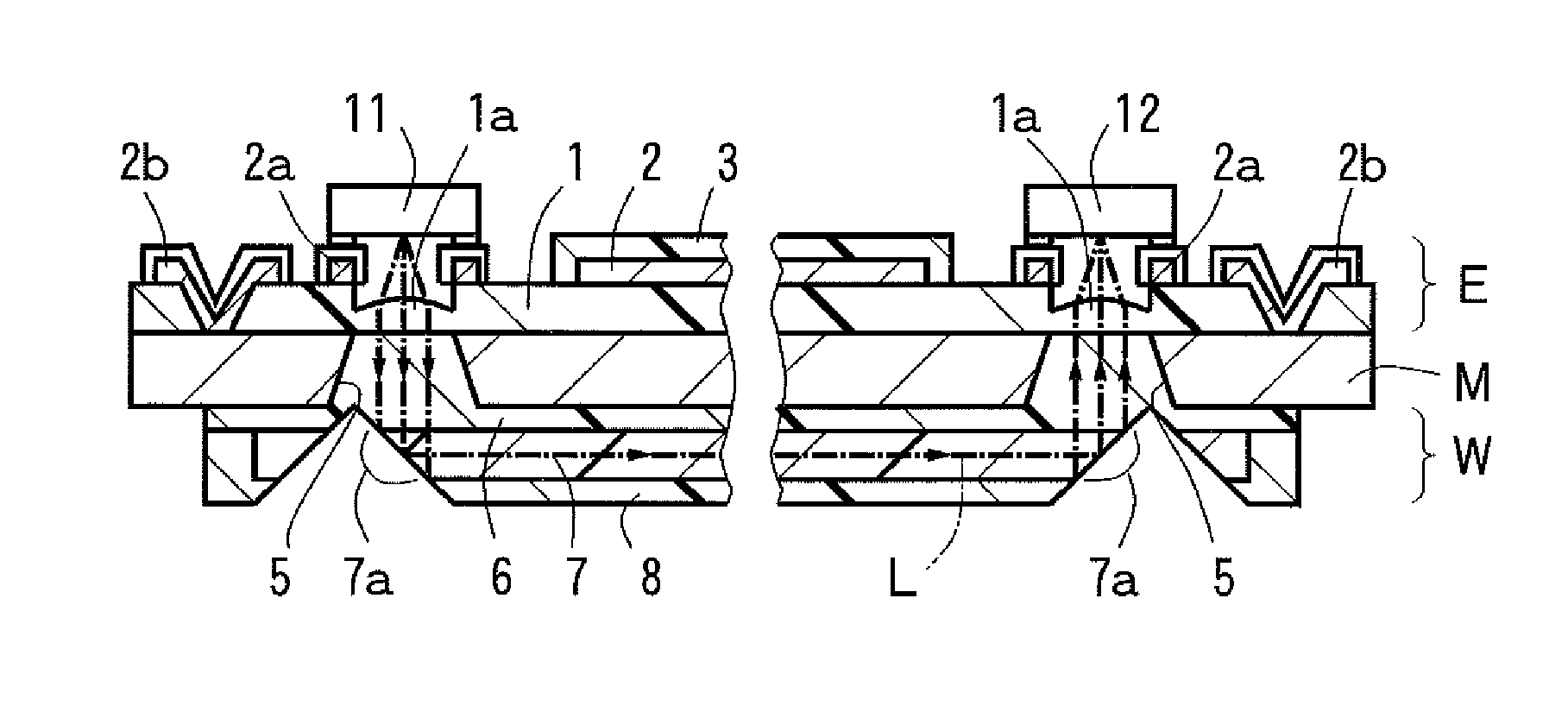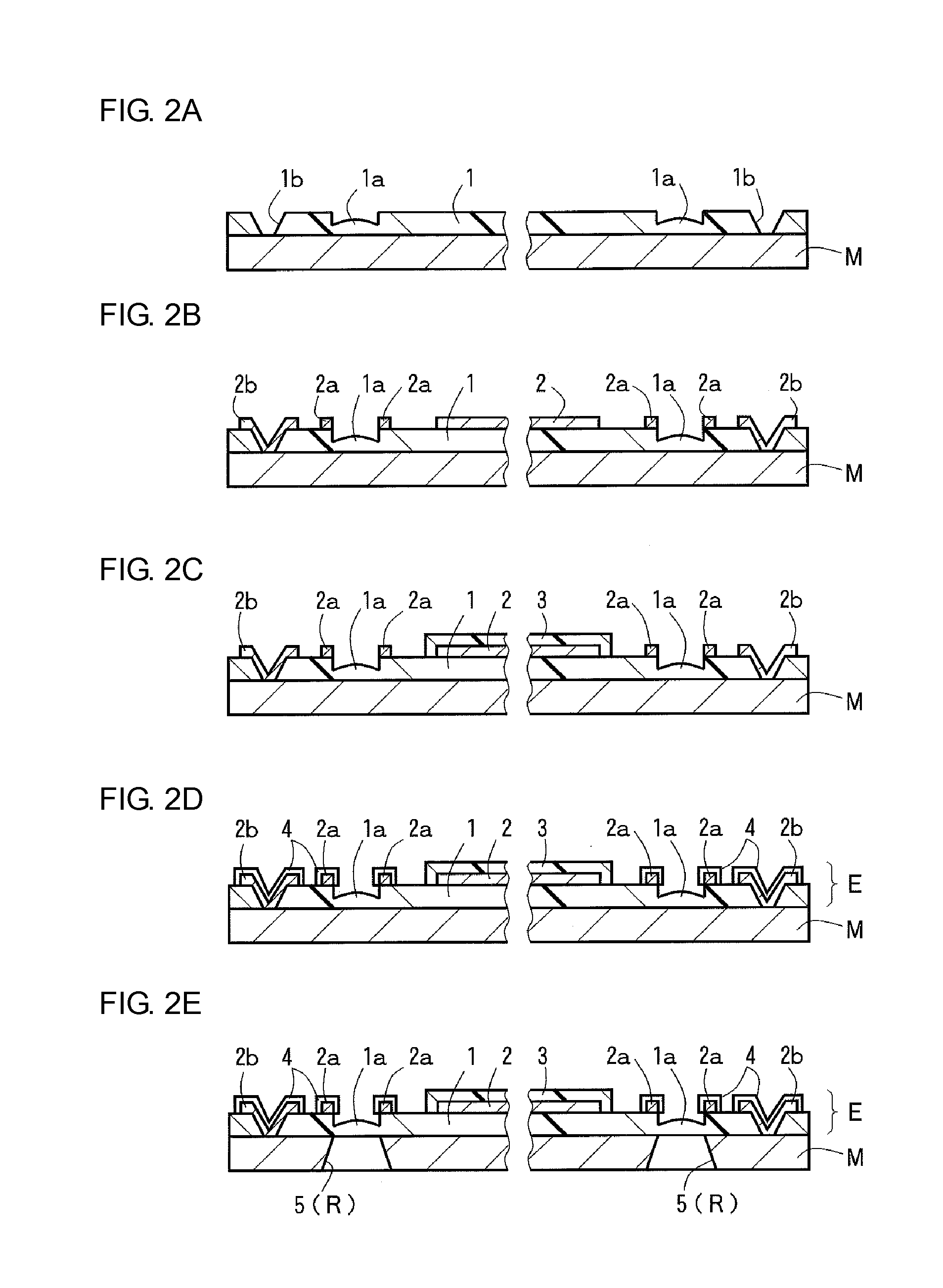Opto-electric hybrid board
a hybrid board and optoelectronic technology, applied in the direction of optical elements, circuit optical details, instruments, etc., can solve the problems of low propagation efficiency of light beam l, affecting the accuracy of mounting positions, and lowering productivity, so as to reduce the loss of coupling light
- Summary
- Abstract
- Description
- Claims
- Application Information
AI Technical Summary
Benefits of technology
Problems solved by technology
Method used
Image
Examples
##ventive examples 1 to 4
Inventive Examples 1 to 4
[0059]The opto-electric hybrid board in the first preferred embodiment was prepared as an opto-electric hybrid board in Inventive Example 1, and the opto-electric hybrid board in the second preferred embodiment was prepared as an opto-electric hybrid board in Inventive Example 2. The opto-electric hybrid board in the third preferred embodiment was prepared as an opto-electric hybrid board in Inventive Example 3, and the opto-electric hybrid board in the fourth preferred embodiment was prepared as an opto-electric hybrid board in Inventive Example 4. In each of Inventive Examples 1 to 4, an insulative layer made of a polyimide resin and having lens portions was formed on a front surface of stainless steel foil (SUS304H-TA; a metal layer) having a thickness of 20 μm by a photolithographic process using a photomask. Portions of the photomask corresponding to the lens portions had an average transmittance which was 80% of that of other portions thereof, and the ...
PUM
 Login to View More
Login to View More Abstract
Description
Claims
Application Information
 Login to View More
Login to View More - R&D
- Intellectual Property
- Life Sciences
- Materials
- Tech Scout
- Unparalleled Data Quality
- Higher Quality Content
- 60% Fewer Hallucinations
Browse by: Latest US Patents, China's latest patents, Technical Efficacy Thesaurus, Application Domain, Technology Topic, Popular Technical Reports.
© 2025 PatSnap. All rights reserved.Legal|Privacy policy|Modern Slavery Act Transparency Statement|Sitemap|About US| Contact US: help@patsnap.com



